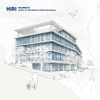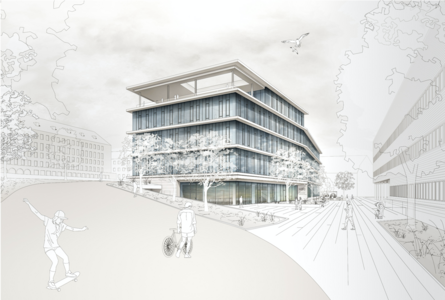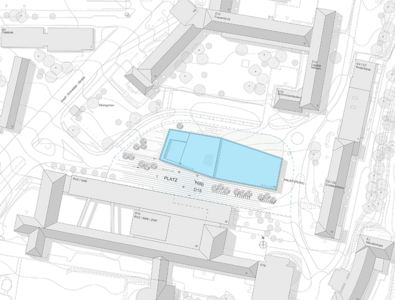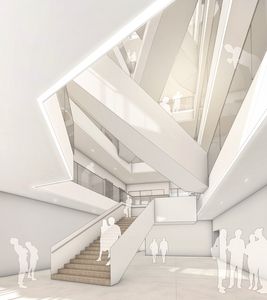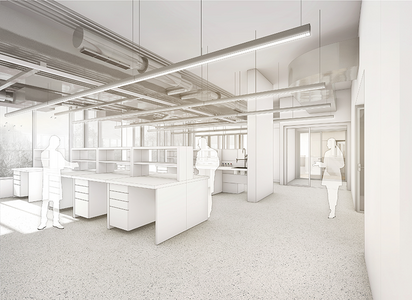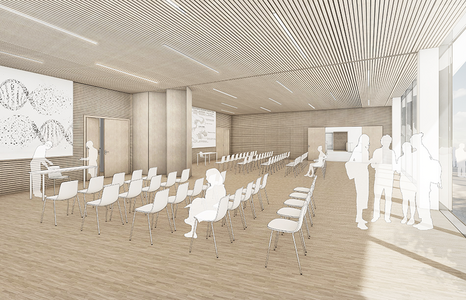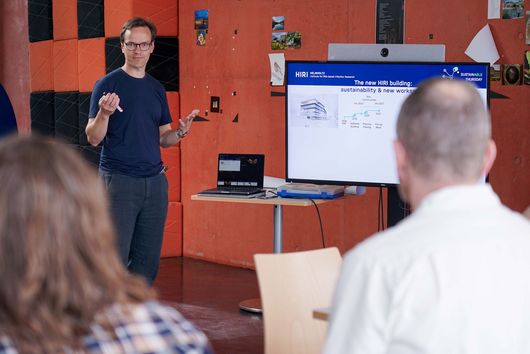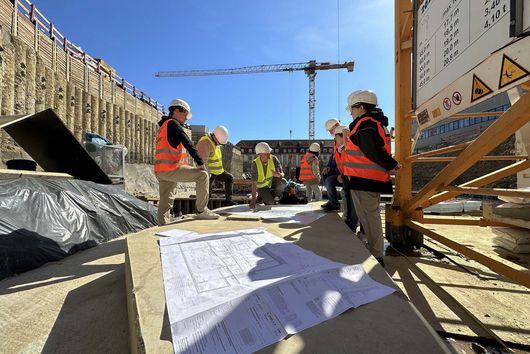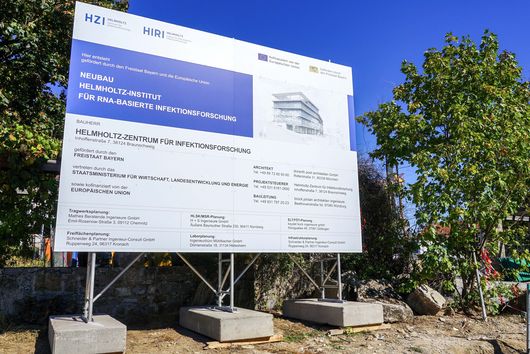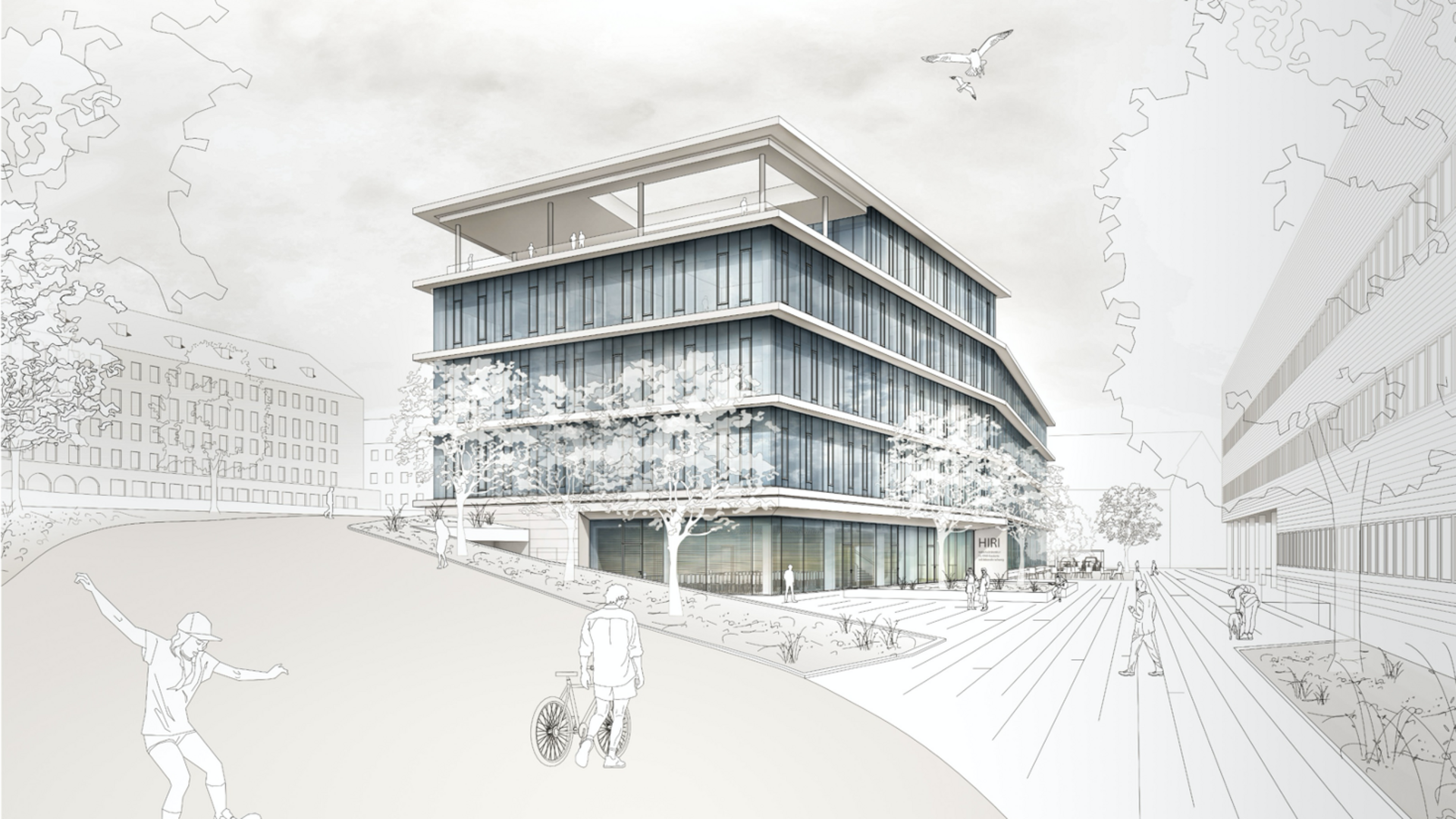
Our New Building
On the Medical Campus Würzburg
In May 2017, the Würzburg Helmholtz Institute for RNA-based Infection Research (HIRI) was founded with the aim to develop new strategies and therapies in the fight against infectious diseases. It is a site of the Braunschweig Helmholtz Centre for Infection Research in cooperation with the Julius-Maximilians-Universität of Würzburg (JMU). Our institute is pioneering an integrated approach to investigate the potential of ribonucleic acids (RNA) in therapy and diagnostics.
Currently still housed provisionally in premises of the JMU, our own building—funded by the Free State of Bavaria, represented by the State Ministry of Economic Affairs, Regional Development and Energy, and co-financed by the European Union—will be constructed so that we can permanently fulfill our research mission in Würzburg.
In cooperation with the JMU and University Hospital Würzburg, we conduct a comprehensive range of pioneering research, spanning from basic RNA research to medical applications and the clinic. This approach enables us to effectively address the major health challenges of our time, such as emerging pandemics and zoonoses, increasing antibiotic resistance and severe genetic diseases.

Current construction work
Click below for information on the ongoing construction work and any potential disruption on the medical campus:
The concept
In 2018, an architectural competition was held with the objective of creating a new building for the Helmholtz Institute Würzburg that would be future-oriented and cost-effective. The contract was awarded to DORANTHPOST architects, an architectural firm based in Munich. The firm is working in Germany and abroad and has successfully completed multiple buildings for scientific institutions, including in Bavaria, for example in Munich and Erlangen.
The design for the new HIRI building envisions a slender, longitudinally oriented structure that harmonizes with its surroundings on the medical campus in terms of shape and size. At the same time, the institute's transparent glass façade, its open main staircase flooded with natural light and its fragmented cubature establish a contemporary juxtaposition to the adjacent historic buildings dating to the Wilhelminian period.
A striking feature of the construction is the west-facing top section of the building, which is designed as a fifth floor and highlights the autonomy of the Helmholtz Institute within the campus. It also serves as a meeting place and venue for events.
The rooftop terrace, oriented towards the west, offers numerous views of Würzburg’s architectural landmarks. The front of the building is directed towards Josef-Schneider-Straße, promoting the location and establishing a well-proportioned public square that acts as gathering space and connection point to the Institute for Molecular Infection Biology and the Rudolf Virchow Center, located across the way. This new square also ensures easy accessibility to the building and its first-floor seminar rooms.
The new HIRI building at a glance
Owner
Helmholtz Centre for Infection Research (HZI)
Funding
Free State of Bavaria, represented by the State Ministry of Economic Affairs, Regional Development and Energy
Co-financed by the European Union
Architects
DORANTHPOST Architekten GmbH
Architectural idea
Slender, longitudinally oriented building with fragmented cubature
Open main staircase flooded with natural light
Numerous open working and communication spaces
Flexibility of use and ease of operation
Features
Thermally insulated façade with solar-controlled windows
Night-time cooling
Green roof supports biodiversity
Capacity
5/4-story building housing offices and laboratories for approx. 130 employees
Floor space
4,780 square meters

